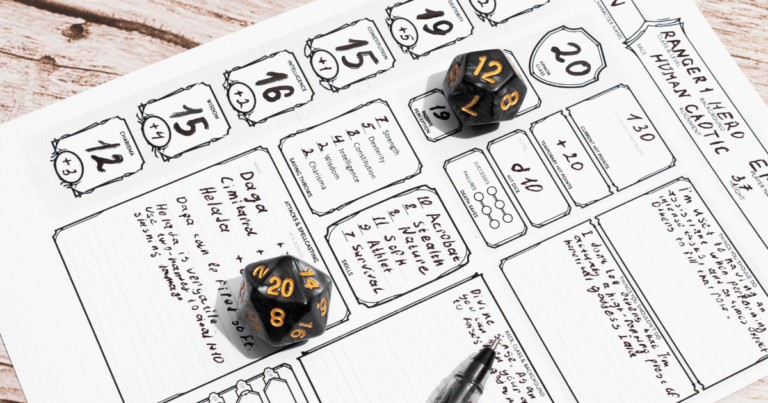EMDR for Social Anxiety: Healing Past Wounds to Build Future Confidence
Does your social anxiety feel automatic, overwhelming, and impossible to “think” your way out of? When traditional therapy approaches haven’t provided the relief you need, EMDR for social anxiety offers a powerful alternative that targets the root memories driving your fear.
While Cognitive Behavioral Therapy (CBT) focuses on changing current thoughts and behaviors, EMDR for social anxiety takes a fundamentally different approach. It recognizes that many social fears stem from unprocessed past experiences that remain “stuck” in your nervous system, continuing to trigger intense reactions years or even decades later.
This comprehensive guide explores how Eye Movement Desensitization and Reprocessing can transform your relationship with social situations by healing the memories that fuel your fear, helping you build genuine confidence from the inside out.
Understanding the Trauma Roots of Social Anxiety
How Past Experiences Shape Present Fears
The memory-based foundation of social anxiety: Social anxiety rarely develops in a vacuum. For many people, current social fears can be traced back to specific experiences where they felt humiliated, rejected, criticized, or endangered in social situations. These experiences become “feeder memories” that continue to influence how your brain responds to social situations.
Common origins of social anxiety:
- Childhood bullying or teasing: Being mocked, excluded, or targeted by peers
- Public humiliation: Embarrassing moments in classrooms, performances, or social gatherings
- Critical caregivers: Harsh criticism, shaming, or emotional neglect from parents or authority figures
- Social rejection: Being excluded from groups, friendships ending painfully, or romantic rejection
- Academic or performance failures: Being criticized for mistakes in front of others
- Family dynamics: Growing up in households with high criticism, perfectionism, or social judgment
- Cultural or identity-based trauma: Discrimination, prejudice, or feeling different from peers
How Unprocessed Memories Create Current Symptoms
The neurobiological impact: When traumatic or distressing social experiences occur, they can become “stuck” in the brain’s memory processing system. Instead of being stored as normal memories that fade over time, they remain vivid and emotionally charged, complete with:
- Intense emotions: Fear, shame, embarrassment, anger, or sadness
- Physical sensations: Racing heart, sweating, nausea, muscle tension
- Negative beliefs: “I’m not good enough,” “I’ll always be rejected,” “I’m weird”
- Behavioral responses: Freezing, fleeing, or fighting in social situations
The time-travel effect: When current social situations resemble past traumatic experiences, your brain essentially “time travels” back to the original event. You might be a confident adult, but in that moment, you feel and react like the hurt child, teenager, or young adult who first experienced the trauma.
Examples of memory-triggered reactions:
- A teacher’s criticism in 3rd grade still makes you terrified of speaking up in work meetings
- Being laughed at during a middle school presentation causes panic about any public speaking
- A parent’s constant criticism about your appearance creates fear of being seen or noticed
- Being excluded from a friend group in high school makes you assume you’ll always be rejected
What Is EMDR and How Does It Work?
The Science Behind EMDR
EMDR (Eye Movement Desensitization and Reprocessing) is an evidence-based psychotherapy developed by Dr. Francine Shapiro in the late 1980s. Originally designed for treating PTSD, EMDR has since been adapted for many conditions, including social anxiety, where past experiences contribute to current symptoms.
The Adaptive Information Processing (AIP) model: EMDR is based on the understanding that the brain has a natural healing mechanism for processing disturbing experiences. When this system gets overwhelmed or blocked, memories remain unprocessed and continue to cause problems. EMDR helps activate this natural healing process.
How bilateral stimulation works: The core component of EMDR involves bilateral stimulation (BLS)—typically rapid eye movements following a therapist’s finger, but can also include alternating sounds or tactile sensations. This bilateral stimulation appears to:
- Activate both brain hemispheres simultaneously
- Stimulate the brain’s natural information processing mechanisms
- Help integrate traumatic memories into normal memory networks
- Reduce the emotional charge attached to disturbing memories
The EMDR Process for Social Anxiety
Phase 1: History Taking and Treatment Planning
What happens:
- Comprehensive assessment of your social anxiety and its origins
- Identification of specific target memories that contribute to current fears
- Development of coping strategies and emotional regulation skills
- Assessment of your readiness for memory processing work
For social anxiety specifically:
- Mapping your social anxiety timeline and key triggering events
- Identifying patterns between past experiences and current triggers
- Assessing which memories are most actively driving current symptoms
- Understanding your support system and current coping resources
Phase 2: Preparation and Stabilization
Building your toolkit:
- Learning relaxation and grounding techniques
- Developing emotional regulation skills
- Creating “safe place” imagery for emotional stability
- Practicing bilateral stimulation to ensure comfort with the process
- Building trust in the therapeutic relationship
Why this phase is crucial for social anxiety: Social anxiety often involves feeling unsafe in interpersonal situations. Before processing traumatic memories, you need to feel secure in the therapeutic relationship and confident in your ability to manage difficult emotions that may arise.
Phase 3: Assessment
Preparing for memory processing:
- Identifying the specific target memory to process
- Describing the image that represents the worst part of the memory
- Identifying negative beliefs about yourself connected to the memory
- Noting physical sensations and emotions associated with the memory
- Rating the intensity of disturbance on a 0-10 scale (Subjective Units of Disturbance – SUD)
For social anxiety memories:
- Focusing on specific moments of humiliation, rejection, or criticism
- Identifying negative self-beliefs formed during these experiences
- Understanding how these memories connect to current social fears
Phase 4: Desensitization
The active processing phase:
- Following bilateral stimulation while holding the target memory in mind
- Allowing whatever thoughts, feelings, or sensations to arise naturally
- Continuing processing until the memory’s emotional intensity decreases significantly
- Typically multiple sets of bilateral stimulation with brief check-ins
What happens during processing:
- The memory may become less vivid or emotionally charged
- New insights or perspectives may emerge spontaneously
- Physical sensations often shift or resolve
- Negative emotions typically decrease in intensity
- You remain conscious and in control throughout the process
Phase 5: Installation
Strengthening positive beliefs:
- Identifying a positive belief to replace the negative one
- Strengthening this positive belief using bilateral stimulation
- Rating how true the positive belief feels (Validity of Cognition – VoC scale)
- Continuing until the positive belief feels completely true
For social anxiety:
- Replacing “I’m worthless” with “I am valuable and worthy of respect”
- Changing “I’ll always be rejected” to “I can handle social situations and build connections”
- Transforming “I’m not good enough” into “I am capable and competent”
Phase 6: Body Scan
Checking for remaining disturbance:
- Scanning your body for any remaining tension or disturbance
- Processing any remaining physical sensations with bilateral stimulation
- Ensuring the memory is fully processed and integrated
Phase 7: Closure
Returning to stability:
- Using relaxation techniques to return to a calm state
- Discussing the session and any insights that emerged
- Planning self-care and coping strategies for between sessions
- Scheduling follow-up sessions as needed
Phase 8: Reevaluation
Checking progress:
- Assessing how the processed memory feels in the next session
- Checking if new aspects of the memory need processing
- Evaluating changes in current social anxiety symptoms
- Planning continued treatment as needed
EMDR vs. Other Therapies for Social Anxiety
EMDR vs. CBT: Different Approaches, Both Effective
CBT (Cognitive Behavioral Therapy)
Approach: “Top-down” processing that works through conscious thought Focus: Current thoughts, behaviors, and coping strategies Methods: Thought challenging, exposure therapy, behavioral experiments Timeline: Typically 12-20 sessions for social anxiety
Best for:
- People who can identify and challenge thought patterns
- Those ready for gradual exposure to feared situations
- Individuals whose anxiety responds to logical analysis
- People without significant trauma histories
EMDR (Eye Movement Desensitization and Reprocessing)
Approach: “Bottom-up” processing that works through body and emotion Focus: Past memories and experiences that fuel current anxiety Methods: Bilateral stimulation, memory processing, belief transformation Timeline: Variable, often fewer sessions needed for specific memories
Best for:
- People whose anxiety feels automatic and body-based
- Those with identifiable traumatic or disturbing social experiences
- Individuals who haven’t responded well to cognitive approaches
- People whose anxiety feels “bigger” than current circumstances warrant
EMDR vs. Exposure Therapy
Traditional Exposure Therapy
Method: Gradual, repeated exposure to feared social situations Goal: Habituation and new learning that social situations are safe Process: Systematic desensitization through real-world practice
Challenges for some people:
- Can feel overwhelming if underlying trauma isn’t addressed
- May reinforce avoidance if not properly implemented
- Doesn’t address the root memories driving the fear
EMDR
Method: Processing underlying memories that fuel social fears Goal: Resolving the emotional charge of past experiences Process: Healing memories so they no longer trigger current fear
Advantages:
- Can make exposure therapy more effective by reducing baseline fear
- Addresses root causes rather than just symptoms
- Often requires less direct exposure to feared situations
- Can resolve fears more completely and permanently
Integrative Approaches
Many therapists successfully combine EMDR with other approaches:
- Using EMDR to process trauma memories, then CBT for ongoing skill building
- Combining EMDR with exposure therapy for comprehensive treatment
- Using EMDR alongside mindfulness and acceptance-based approaches
- Integrating EMDR with somatic therapies for body-based healing
Who Benefits Most from EMDR for Social Anxiety?
Ideal Candidates for EMDR
EMDR for social anxiety may be particularly effective if you:
- Can identify specific past experiences that seem connected to your current fears
- Feel like your social anxiety is an automatic, body-based reaction
- Experience physical symptoms (racing heart, nausea, trembling) that feel disproportionate
- Have tried cognitive approaches with limited success
- Feel “stuck” despite understanding that your fears may be irrational
- Have additional trauma history beyond social experiences
- Experience flashbacks or intrusive memories related to social situations
Signs That Past Experiences May Be Driving Current Anxiety
Consider EMDR if your social anxiety includes:
- Intense physical reactions that seem “bigger” than the current situation warrants
- Specific triggers that remind you of past experiences
- Feeling like you “time travel” to past painful moments during social stress
- Difficulty responding to logical reassurance about social situations
- Recurring themes in your social fears that connect to past experiences
- Dreams or intrusive thoughts about past social trauma
When EMDR Might Not Be the First Choice
Other approaches might be more appropriate if:
- Your social anxiety developed gradually without specific triggering events
- You have very severe current symptoms that need immediate stabilization
- You have difficulty tolerating strong emotions or sensations
- You prefer cognitive, problem-solving approaches to healing
- You have concerns about memory work or processing past experiences
What to Expect in EMDR for Social Anxiety
The First Sessions
Initial assessment and preparation:
- Comprehensive history of your social anxiety and its development
- Identification of key target memories for processing
- Assessment of your current coping skills and support system
- Development of stabilization and self-regulation techniques
Building safety and trust:
- Learning about the EMDR process and what to expect
- Practicing bilateral stimulation to ensure comfort
- Developing a “safe place” visualization for emotional regulation
- Establishing signals for communication during processing
During Memory Processing Sessions
What the experience is like:
- You remain fully conscious and aware throughout the process
- You’re in control and can stop or pause at any time
- Processing often feels like “fast-forwarding” through the memory
- Emotions and sensations may intensify briefly before resolving
- New insights, perspectives, or connections often emerge spontaneously
Common experiences during EMDR:
- Memories may become less vivid or emotionally charged
- Physical sensations often shift or release
- New perspectives on old experiences may emerge
- You may remember details you had forgotten
- The memory typically becomes “just a memory” rather than an emotional trigger
After Processing Sessions
Immediate effects:
- Often feeling emotionally lighter or more relaxed
- Sometimes experiencing fatigue from the emotional work
- Occasionally having vivid dreams as the brain continues processing
- May notice immediate changes in how triggering situations feel
Long-term changes:
- Reduced emotional reactivity to previously triggering social situations
- Increased confidence and sense of self-worth
- Better ability to stay present during social interactions
- More authentic self-expression in relationships
- Decreased physical symptoms of social anxiety
Finding Qualified EMDR Therapists
Essential Qualifications
Look for therapists who have:
- Licensed mental health professional (psychologist, social worker, counselor, psychiatrist)
- Specific EMDR training and certification through EMDRIA (EMDR International Association)
- Experience adapting EMDR for social anxiety specifically
- Understanding of trauma’s impact on social development
- Additional training in attachment, developmental trauma, or anxiety disorders
Questions to ask potential EMDR therapists:
- Are you trained and certified in EMDR?
- How much experience do you have using EMDR for social anxiety?
- What additional training do you have in trauma or anxiety treatment?
- How do you determine if someone is ready for EMDR processing?
- What’s your approach to stabilization and preparation?
Red Flags to Avoid
Be cautious of therapists who:
- Rush into memory processing without adequate preparation
- Promise quick fixes or guaranteed outcomes
- Don’t have proper EMDR training or certification
- Seem uncomfortable discussing trauma or its effects
- Don’t assess your readiness for processing work
- Use EMDR for every client regardless of their specific needs
Preparing for EMDR Treatment
Building Emotional Regulation Skills
Before beginning memory processing, work on:
- Developing healthy coping strategies for stress and anxiety
- Building emotional regulation and distress tolerance skills
- Creating a strong support system for between-session support
- Addressing any substance use or self-harm behaviors
- Stabilizing any major life stressors when possible
What to Expect in Terms of Timeline
Typical EMDR treatment progression:
- Phase 1-2 (Preparation): 1-4 sessions building stability and trust
- Phase 3-6 (Active processing): Variable, depending on number of target memories
- Phase 7-8 (Integration): Ongoing as needed for consolidation
Factors affecting treatment length:
- Number of traumatic memories needing processing
- Complexity and severity of past experiences
- Current life stability and support system
- Your individual processing style and pace
- Whether EMDR is combined with other therapeutic approaches
Self-Care During EMDR Treatment
Supporting your healing process:
- Maintain regular sleep, exercise, and nutrition routines
- Practice relaxation and grounding techniques between sessions
- Stay connected with supportive friends and family
- Avoid major life changes during intensive processing periods
- Be patient with the healing process and trust your natural resilience
Potential Challenges and How to Navigate Them
Common Concerns About EMDR
“What if I can’t handle the emotions?”
- EMDR includes extensive preparation to build coping skills
- You remain in control and can pause processing at any time
- Your therapist will help you regulate emotions throughout the process
- Processing typically reduces rather than increases overall emotional distress
“What if I remember something terrible?”
- EMDR doesn’t create false memories, but may help you remember forgotten details
- Your therapist is trained to help you process whatever emerges safely
- The goal is healing, not just remembering
- You can choose which memories to work on and when
“What if it doesn’t work for me?”
- EMDR isn’t effective for everyone, and that’s okay
- Your therapist can help you explore other treatment options
- Even partial improvement can be significant and meaningful
- The preparation phase often provides valuable skills regardless
When EMDR Needs to Be Modified
Adaptations for complex cases:
- Additional stabilization for people with complex trauma histories
- Slower pacing for those who become easily overwhelmed
- Integration with other therapy approaches as needed
- Focus on building positive resources before processing negative memories
The Science and Research Behind EMDR
Evidence Base for EMDR
Research supporting EMDR:
- Recognized as an effective treatment for PTSD by major health organizations
- Studies showing effectiveness for anxiety disorders, including social anxiety
- Neuroimaging research demonstrating changes in brain activation patterns
- Meta-analyses supporting EMDR’s effectiveness compared to other trauma treatments
Ongoing research:
- Studies on EMDR’s effectiveness for specific anxiety disorders
- Investigation of the mechanisms behind bilateral stimulation
- Research on optimal protocols for different types of trauma
- Studies on combining EMDR with other therapeutic approaches
How EMDR Changes the Brain
Neurobiological effects:
- Increased communication between brain hemispheres
- Reduced amygdala reactivity to traumatic memories
- Improved integration between emotional and rational brain regions
- Enhanced memory consolidation and reconsolidation processes
Success Stories and Realistic Expectations
What Recovery Looks Like
Signs of successful EMDR processing:
- Reduced emotional intensity when thinking about past experiences
- Increased confidence in social situations that previously felt threatening
- Ability to stay present during social interactions rather than “time traveling” to past trauma
- Improved self-esteem and sense of personal worth
- Greater authenticity in relationships and self-expression
Realistic Timeline and Expectations
What to expect:
- Some memories may resolve in just a few processing sessions
- Complex trauma patterns may require longer treatment
- Benefits often extend beyond the specific memories processed
- Improvements may continue for months after active treatment ends
- Most people experience significant improvement, though complete elimination of all social anxiety isn’t guaranteed
Your Path to Healing: Taking the Next Step
EMDR for social anxiety offers a unique and powerful approach to healing that addresses the root causes of social fear rather than just managing symptoms. By processing and resolving the past experiences that continue to trigger current anxiety, EMDR can help you build genuine, lasting confidence that comes from deep internal healing.
Consider EMDR if:
- Your social anxiety feels automatic and overwhelming
- You can connect current fears to specific past experiences
- Traditional therapy approaches haven’t provided sufficient relief
- You’re ready to process and heal from past wounds
- You want to address root causes rather than just manage symptoms
The healing journey:
- Starts with finding a qualified, experienced EMDR therapist
- Requires commitment to the process and trust in your natural healing capacity
- May involve temporary increases in emotional intensity as memories are processed
- Ultimately leads to greater freedom, authenticity, and social confidence
Remember:
- Your past experiences shaped your current fears, but they don’t have to control your future
- The memories that created your social anxiety can be healed and transformed
- You have an innate capacity for healing and growth
- Professional support can guide you safely through the process
EMDR for social anxiety isn’t about forgetting your past or pretending difficult experiences didn’t happen. It’s about freeing yourself from the emotional charge of those experiences so they no longer limit your ability to connect authentically with others.
Your journey from fear to freedom, from social anxiety to social confidence, can begin with understanding that healing the past is the key to transforming your future.
The memories that once held you back can become the foundation for your greatest growth. Your healing journey starts with a single, courageous step toward addressing the roots of your social anxiety.
Are you ready to heal the past and reclaim your social confidence?







